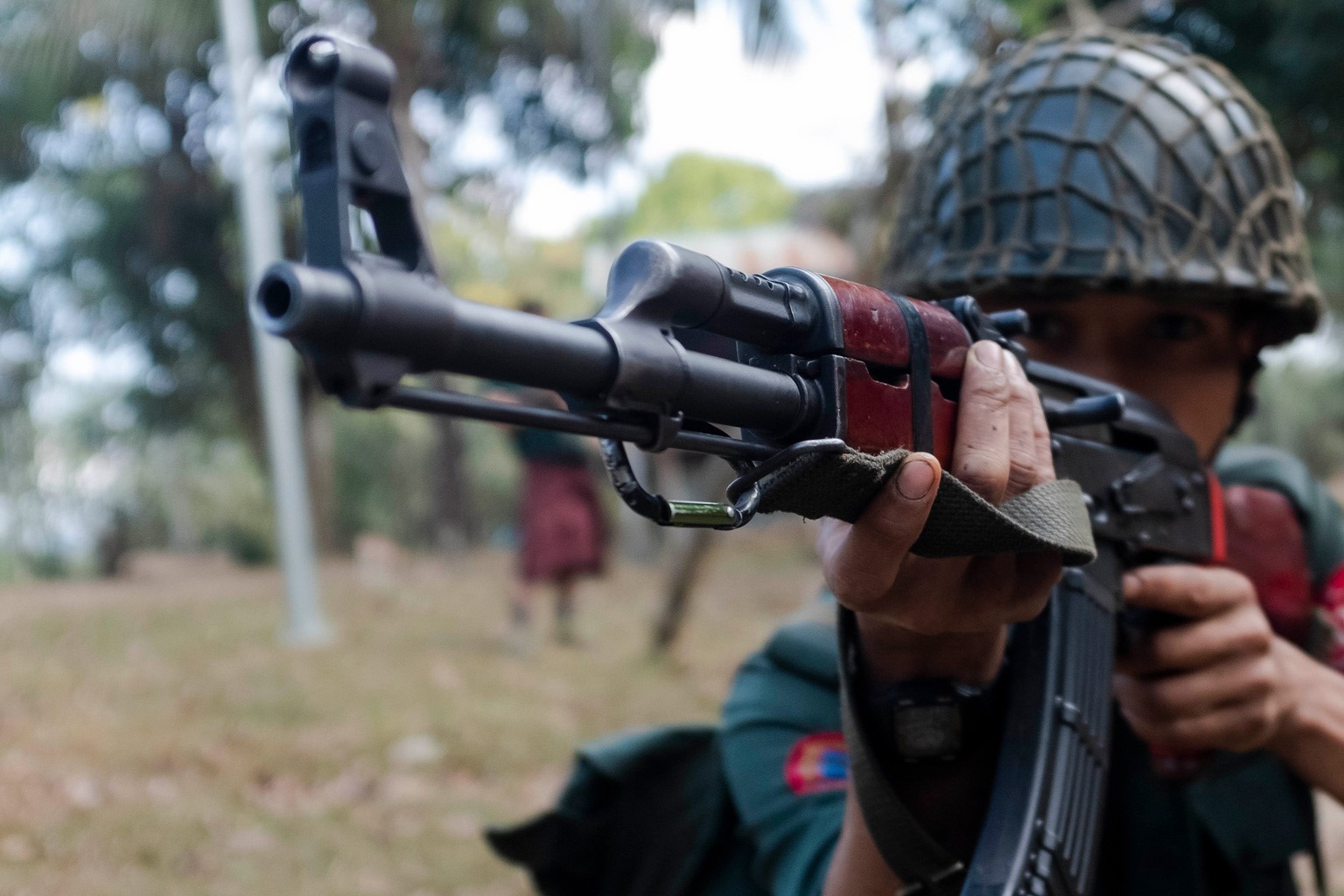
The Arakanese Uprising is a significant yet often overlooked chapter in history. This event, rooted in the struggle for independence and autonomy, saw the Arakanese people rise against oppressive regimes. Why did the Arakanese Uprising happen? The primary reasons include a desire for self-determination, resistance to foreign domination, and cultural preservation. The uprising not only shaped the region's political landscape but also highlighted the resilience and determination of the Arakanese people. Understanding this historical event provides insight into the broader context of regional conflicts and the enduring quest for freedom. Dive into these 30 facts to uncover the layers of this pivotal uprising.
Key Takeaways:
- The Arakanese Uprising, a 18th-century conflict in Myanmar, shaped the region's history and culture. It led to international involvement and continues to inspire quests for autonomy and recognition.
- The uprising, marked by resistance and geopolitical consequences, remains a symbol of colonial and indigenous resistance. Its impact on modern Myanmar's ethnic and political landscape is still felt today.
The Arakanese Uprising: A Historical Overview
The Arakanese Uprising is a significant event in Southeast Asian history. It highlights the struggle of the Arakanese people for autonomy and recognition. Here are some fascinating facts about this historical event.
- The Arakanese Uprising took place in the 18th century, primarily between 1784 and 1826.
- The conflict was mainly between the Kingdom of Burma and the Arakanese people.
- Arakan, now known as Rakhine State, is located in present-day Myanmar.
- The Arakanese people are an ethnic group with their own distinct culture and language.
- The Kingdom of Arakan was an independent state before being annexed by the Burmese Empire.
Key Figures in the Uprising
Several key figures played crucial roles in the Arakanese Uprising. Their leadership and actions significantly impacted the course of the conflict.
- King Thado Minsaw of Burma led the initial invasion of Arakan in 1784.
- The Arakanese leader, King Maha Thamada, resisted the Burmese invasion.
- General Maha Bandula was a prominent Burmese military leader during the conflict.
- The British East India Company became involved in the conflict in the early 19th century.
- Sir Archibald Campbell led the British forces during the First Anglo-Burmese War.
The Role of Geography
Geography played a significant role in the Arakanese Uprising. The region's terrain and strategic location influenced the conflict's dynamics.
- Arakan is bordered by the Bay of Bengal to the west and the Arakan Mountains to the east.
- The region's mountainous terrain made it difficult for Burmese forces to maintain control.
- The Kaladan River was a crucial waterway for both trade and military movements.
- Coastal areas of Arakan were important for maritime trade and defense.
- The region's dense forests provided cover for Arakanese guerrilla fighters.
Cultural Impact of the Uprising
The Arakanese Uprising had a lasting impact on the culture and identity of the Arakanese people. It influenced their traditions, art, and collective memory.
- The conflict led to the displacement of many Arakanese people.
- Arakanese folklore and songs often recount tales of resistance and heroism.
- Traditional Arakanese dance and theater sometimes depict scenes from the uprising.
- The uprising strengthened the Arakanese people's sense of identity and unity.
- Religious practices in Arakan were influenced by the conflict, with many seeking solace in Buddhism.
International Involvement
The Arakanese Uprising drew the attention of international powers, leading to significant geopolitical consequences.
- The British East India Company saw the conflict as an opportunity to expand its influence in the region.
- The First Anglo-Burmese War (1824-1826) was partly a result of the Arakanese Uprising.
- The Treaty of Yandabo, signed in 1826, ended the First Anglo-Burmese War and ceded Arakan to the British.
- The British established Arakan as a province of British India.
- The conflict highlighted the strategic importance of Southeast Asia to colonial powers.
Legacy of the Arakanese Uprising
The legacy of the Arakanese Uprising continues to shape the region's history and politics. Its impact is still felt today.
- The uprising is remembered as a symbol of resistance against oppression.
- Arakanese leaders continue to draw inspiration from the uprising in their quest for autonomy.
- The conflict contributed to the complex ethnic and political landscape of modern Myanmar.
- The Arakanese Uprising is studied by historians as an example of colonial and indigenous resistance.
- The region's ongoing struggles for recognition and rights can trace their roots back to the uprising.
Reflecting on the Arakanese Uprising
The Arakanese Uprising stands as a significant chapter in history, showcasing the resilience and determination of the Arakanese people. This conflict, rooted in a quest for autonomy and cultural preservation, highlights the complexities of colonial rule and the struggle for self-determination. The uprising not only shaped the region's political landscape but also left a lasting impact on its cultural identity. Understanding these events helps us appreciate the broader historical context and the enduring spirit of those who fought for their rights. By examining such uprisings, we gain valuable insights into the challenges and triumphs of marginalized communities. The Arakanese Uprising is a testament to the power of collective action and the enduring quest for justice. As we reflect on these facts, let's remember the importance of preserving history and learning from it to build a more inclusive future.
Frequently Asked Questions
Was this page helpful?
Our commitment to delivering trustworthy and engaging content is at the heart of what we do. Each fact on our site is contributed by real users like you, bringing a wealth of diverse insights and information. To ensure the highest standards of accuracy and reliability, our dedicated editors meticulously review each submission. This process guarantees that the facts we share are not only fascinating but also credible. Trust in our commitment to quality and authenticity as you explore and learn with us.
